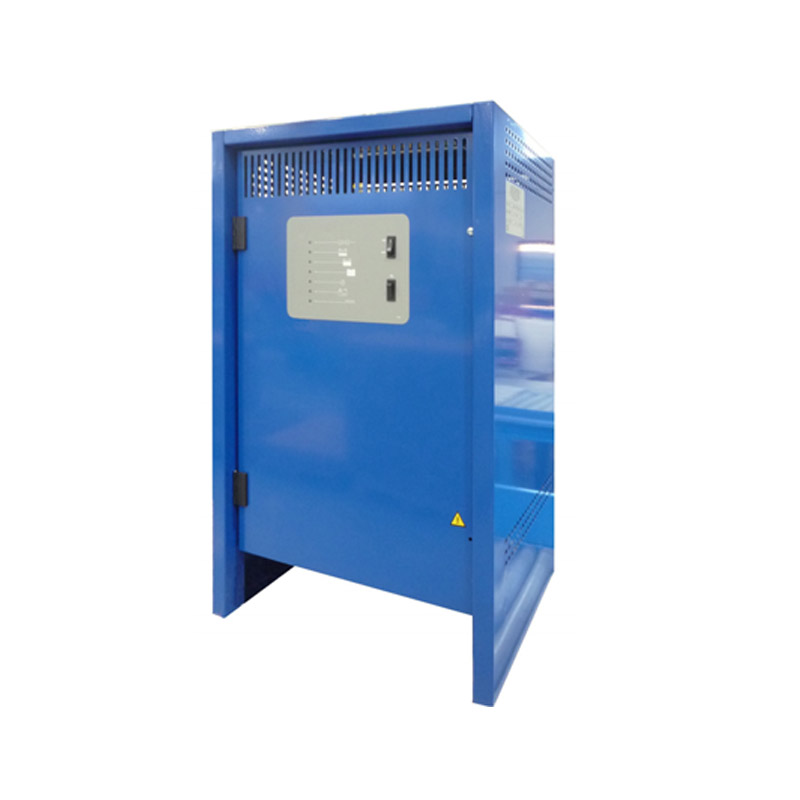Battery chargers are electronic devices engineered to restore energy to rechargeable batteries. They work by providing an electrical current to the battery, effectively reversing the discharge process. Battery chargers come in various types and sizes, catering to different battery chemistries and voltages, such as those for lead-acid batteries, lithium-ion batteries, or nickel-cadmium batteries. Modern battery chargers often incorporate advanced features like automatic voltage and current adjustment, overcharge protection, and smart charging algorithms to optimize the charging process and extend battery life. These versatile devices play a critical role in maintaining the functionality of a wide range of batterypowered devices, from smartphones and laptops to electric vehicles and industrial equipment.
Battery Charger

Industrial battery charger- Standard 50 Hz
An industrial battery charger is a specialized device used to recharge batteries commonly found in industrial applications, such as forklifts, material handling equipment, and backup power systems. These chargers are designed to efficiently and safely replenish the energy stored in batteries, ensuring that equipment remains operational. Industrial battery chargers come in various sizes and configurations to accommodate different battery types, including lead-acid and lithium-ion. They often feature advanced charging algorithms and safety mechanisms to optimize charging cycles, extend battery life, and prevent overcharging or overheating. These chargers play a crucial role in maintaining the reliability and productivity of industrial equipment that relies on batteries for power.
Features :
- Single (model SP_M) and three-phase charger (model SP_T)
- Charge system with decreasing current (Wa) Dispersed flow transformer in tropicalized execution with high quality windings with double glaze, class H Thermal protection on the transformer for disconnection due the maximum temperature
- Straightening bridge equipped with EMC capacitors
- Accuracy and efficiency of charging.
- Microprocessor-controlled programming and measuring via digital gearcase
- Microprocessor control is designed to optimize the charging cycles for any type of battery.
- Modular installation on galvanized steel base.
- Sturdy steel casing with modular panels, ensuring effortless access for servicing needs.
- Enhanced Lexan display panel with easily comprehensible charging data.
- Equipped with an equalization recall feature and a timed charging function.
- LED indicators clearly signal charging phases and outcomes.
- Rigorously tested electronic circuit adhering to electromagnetic compatibility directives and CE marking.
- Automatic charger disconnection upon battery removal.
- Optional: Custom assembly of plugs and battery connectors available upon request.

High Frequency Battery Charger
A High Frequency Battery Charger is an advanced charging device designed for a wide range of battery types, including lead-acid and lithium-ion batteries. What sets it apart is its ability to deliver highfrequency alternating current (AC) at a much higher frequency than traditional chargers. This highfrequency charging technology offers several advantages, such as faster and more efficient charging, reduced energy consumption, and improved battery lifespan. High Frequency Battery Chargers are widely used in various applications, including automotive, industrial, and renewable energy systems, where they play a crucial role in maintaining battery health, reducing downtime, and enhancing overall energy efficiency.
Features :
- Single-phase battery chargers
- High frequency system with advanced technology
- Charging process controlled by microprocessor
- Thermal protection
- High brightness digital display
- Voltage: 12V, 24V, 36V, 48V
- Customizable charging curve, charging current, and battery voltage settings via dip switches.
- Compatible with Lead-Acid, Sealed, Gel Traction, and Lithium batteries.
